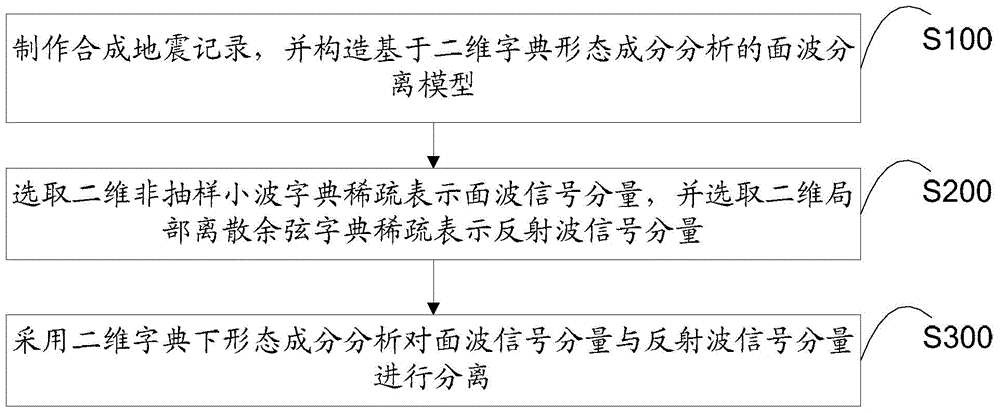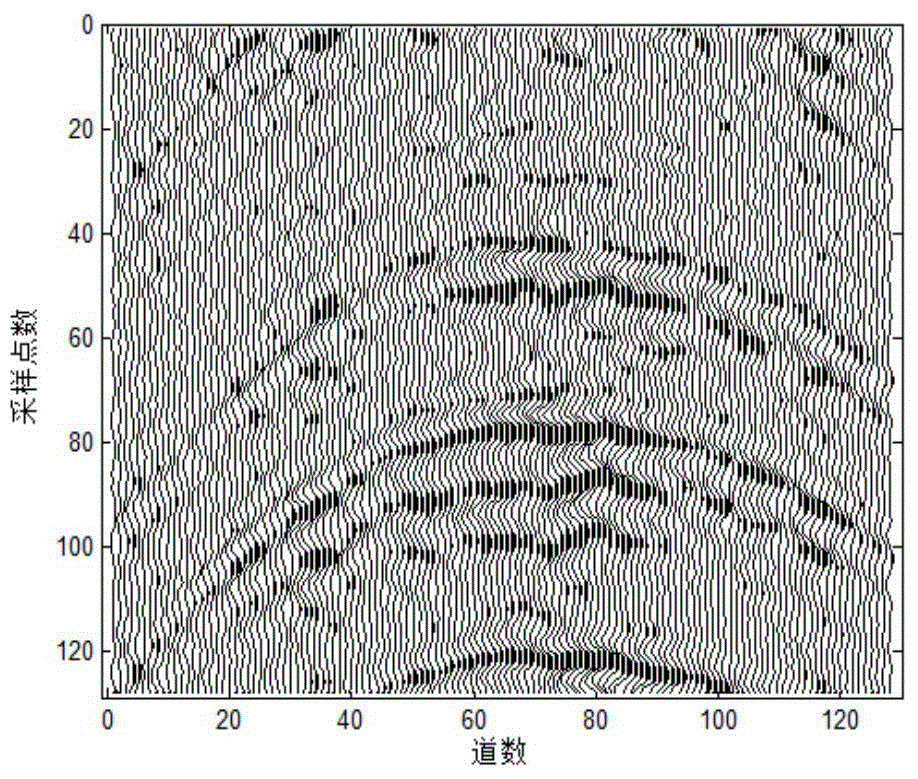Surface wave separation method and system based on morphological component analysis
A technology of morphological component analysis and separation method, applied in seismic signal processing, etc., can solve the problems of slow processing speed of two-dimensional seismic data and inability to effectively use the correlation between traces in seismic data, etc.
- Summary
- Abstract
- Description
- Claims
- Application Information
AI Technical Summary
Problems solved by technology
Method used
Image
Examples
Embodiment Construction
[0074] In order to make the object, technical solution and advantages of the present invention clearer, the present invention will be further described in detail below in conjunction with the accompanying drawings and embodiments. It should be understood that the specific embodiments described here are only used to explain the present invention, not to limit the present invention.
[0075] see figure 1 , is a flow chart of the surface wave separation method based on morphological component analysis according to an embodiment of the present invention. The surface wave separation method based on morphological component analysis of the embodiment of the present invention comprises the following steps:
[0076] Step 100: making synthetic seismic records, and constructing a surface wave separation model based on two-dimensional dictionary morphological component analysis;
[0077] In step 100, the embodiment of the present invention makes a synthetic seismic record specifically: ...
PUM
 Login to View More
Login to View More Abstract
Description
Claims
Application Information
 Login to View More
Login to View More - R&D
- Intellectual Property
- Life Sciences
- Materials
- Tech Scout
- Unparalleled Data Quality
- Higher Quality Content
- 60% Fewer Hallucinations
Browse by: Latest US Patents, China's latest patents, Technical Efficacy Thesaurus, Application Domain, Technology Topic, Popular Technical Reports.
© 2025 PatSnap. All rights reserved.Legal|Privacy policy|Modern Slavery Act Transparency Statement|Sitemap|About US| Contact US: help@patsnap.com



